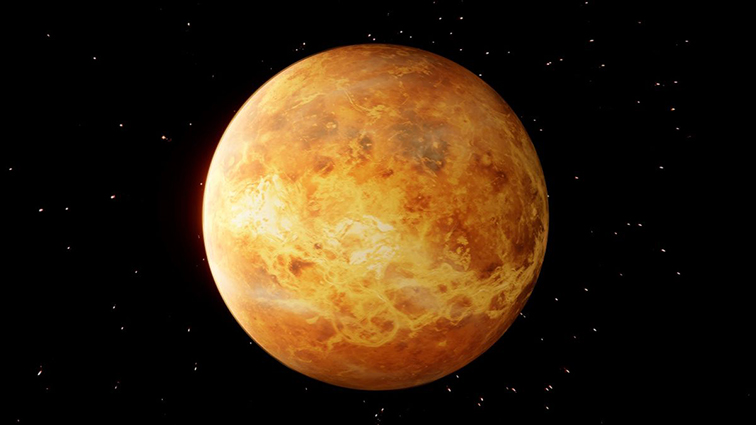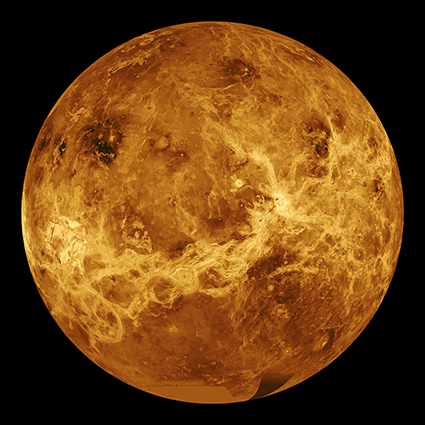


People often mistake Venus for a star. After the Moon, it
is the brightest object in our night sky. Because it is so
close in size to Earth, until
the 20th century astronomers
assumed that it might be in some ways like Earth. The
probes sent to investigate have shown that this is not
so.
The dense cloudy atmosphere of Venus hides its surface
from even the most powerful telescope. Only radar can
penetrate to map
the planet's features.


Until it became possible to determine the surface features-largely flat, volcanic plains-scientists could not tell how long the Venusian day was. The atmosphere would be deadly to humans. It is made up of a mixture of carbon dioxide and sulfuric acid that causes an extreme greenhouse effect," in which heat is trapped by the atmosphere. The ancients, however, saw only a beautifully bright planet, and so they named it after their goddess of love. Nearly all the features mapped on the surface of Venus have been named after women, such as Pavlova, Sappho, and Phoebe.